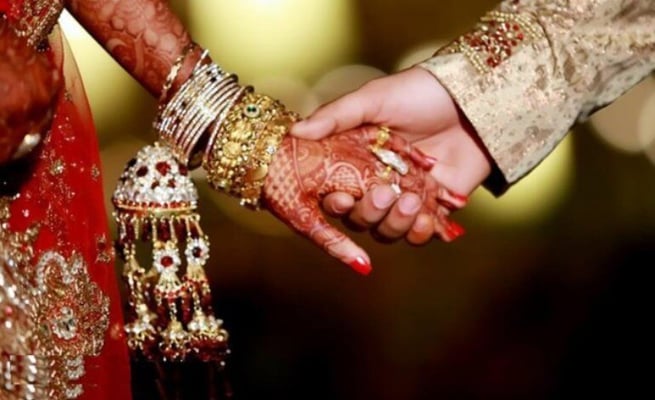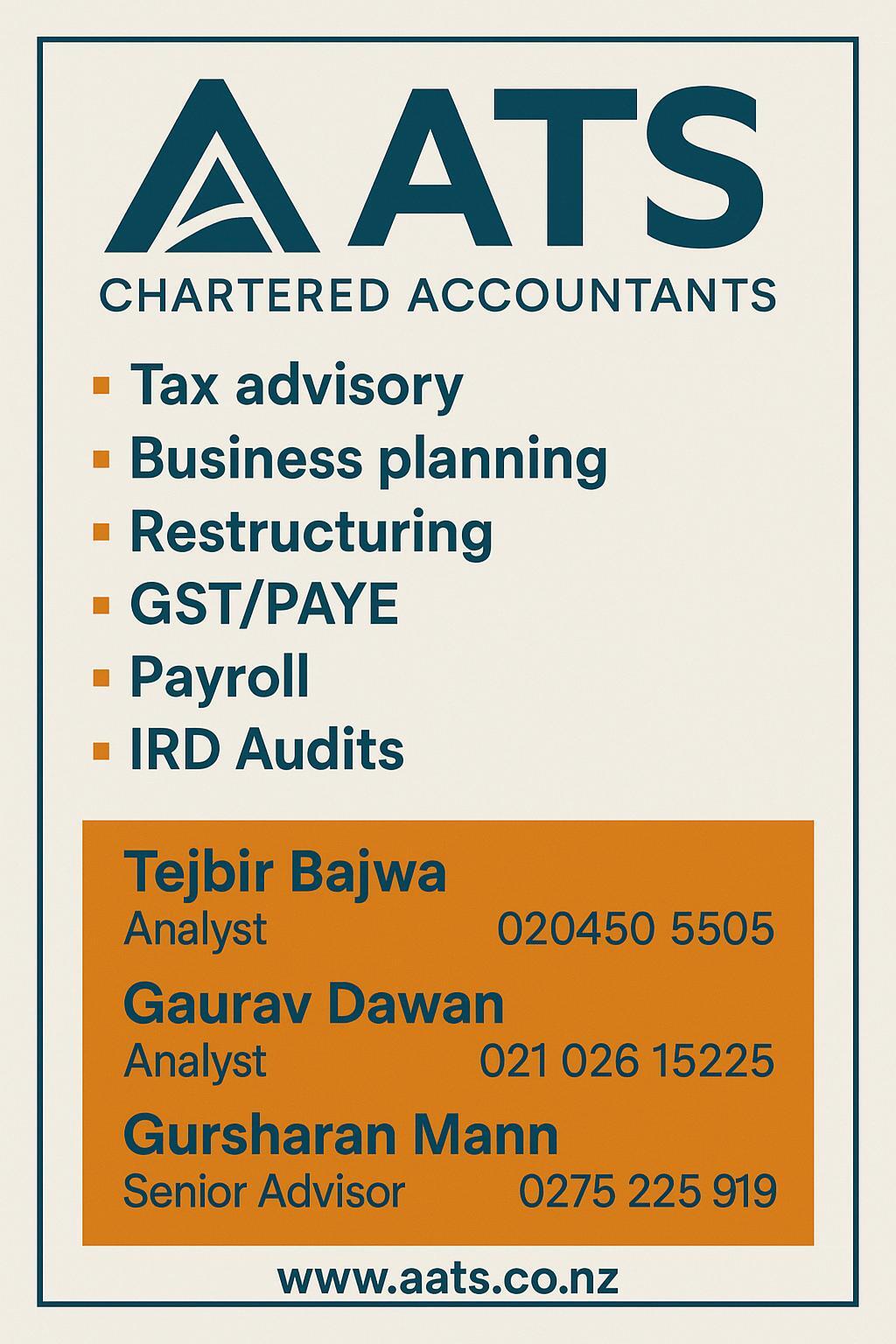Dear Minister this is not return to status quo on partnership visa assessment

The new directive issued on November 13, by Immigration Minister Iain Lees-Galloway claiming to “fix” the problem of partnership visas has actually created more confusion, even if unintended.
Firstly, Minister’s announcement on culturally arranged marriage visas is not a ‘return to status-quo’ as the Prime Minister had herself assured the Indian community a few days ago.
In fact, the issue was never about culturally arranged marriages; it was about partnership-based visas.
Thanks to all the hype by media and spin by the politicians, the focus seems to have moved away from the issue on the hand, and now everyone has become obsessed with Indian culturally arranged marriages albeit without any factual accuracy.
Anyway, after the Minister’s new directive, the partners of Kiwi-Indians will be required to file a visa under a “new” category – “culturally arranged visitor’s visa”.
Explaining the new process in place now, the Minister said, “Those who have a culturally arranged marriage to a New Zealand resident or citizen can apply for a culturally arranged visitor’s visa.”
Notably, a huge majority of Indians (at least more than 95 per cent) have not been applying for visas under this category; rather they have been applying under Partnership based visa category.
The Ministerial directive will require them to now apply under this new category.
Previously, a culturally arranged marriage visitor visa was meant to allow foreigners to come on-shore to for the sole purpose of marrying an NZ resident or citizen within a three month period.
Now, after this recent change, all individuals who had a culturally arranged marriage outside of New Zealand will b eligible to get a visa under this new category provided they meet all other risk-assessments. are required to apply under this category.
On its face, this certainly appears to be the much-awaited good news for the Kiwi-Indian community, who would think that this is a much-needed return to status quo, where everyone who went back to India to marry would be able to get their partners in the country – like before.
However, this certainly not appears to be the case as per the Minister’s directive.
What does Minister’s directive say about culturally arranged marriages?
“Immigration, New Zealand officials, will also need to check the marriage followed an identified cultural tradition, including the facilitation of the selection of the persons to be married being done by people who are not parties to the marriage.” Iain Lees-Galloway said.
As per this statement, which will essentially be an immigration instruction, based on which a case officer will be required to assess visa applications – the choice of bride and groom – has to be essentially made by either parents or families – most definitely not by the couples themselves.
Sanjay Sharma, 29, an IT Analyst working in the insurance sector, who first came to New Zealand in 2015 on a student visa and got residency in 2018, and had recently got his wife's visa declined for want of "living together."
He was in a long-distance relationship with his girlfriend before coming to New Zealand.
In 2018 he travelled back to India to convince both of their parents for an arranged marriage.
They officially engaged in 2018 in the presence of friends and families, before returning back to New Zealand after a month-long holiday.
In 2019 February he again travelled back to India, got culturally and legally married, lived together with his wife for a month and applied for wife’s partnership visa, before returning back to NZ to continue his work.
However, his wife’s partnership visa application was rejected in October 2019 after seven long months of wait with Immigration New Zealand for want of “living together.”
Will his wife qualify for the newly announced “Culturally arranged marriage visitor visa”?
Apparently no, as the boy and girl had chosen themselves and their parents have joined the party later.
So even if he receives a letter from INZ till December 2, as directed by Minister for a reassessment under the “new” visa category – it is highly unlikely he will qualify under existing definitions of ‘culturally arranged marriage’.
An increasing number of Indians all around the world, marry in the above fashion – and as of now, they would not be eligible for a visa to join their partners in this country.
Unfortunately, the Minister’s directive or the immigration fact sheet released subsequently by the INZ is vague and does not provide any clear definition of culturally arranged marriage for the purpose of immigration.
Who gets to decide what a culturally arranged marriage is?
How will an immigration officer decide if, in a marriage, the choice was of parents and not of those getting married?
“What is an identified cultural tradition as the Minister’s directive talks about?” asks Immigration Lawyer Alastair McClymont.
“Is tradition something which existed hundreds of years ago, is a tradition from the last generation or is a cultural tradition reflective of modern mixed arranged marriages? Who decides,” Mr McClymont asks.
Are we opening the country for new immigration fraud?
It seems that following this recent Ministerial announcement that has not returned to the status quo, people, in general, will be encouraged to lie to Immigration New Zealand.
All those people who have been in long-distance relationship, till the time one of their New Zealand based partners settles his or her life, with residency and job or business, waiting to start their lives with their chosen partners, are being encouraged to lie to INZ and say that their marriage partners were pre-selected by their families.
And how will immigration officers on the ground verify that?
Right now we are not even talking about “love-marriages” in India, where often prospective couples, fail to convince their respective parents and families to agree to their choice of life-partners – they have effectively no chance after the new Ministerial directives.
This seems to be an absolute mess, where the state is being seen barging dangerously into individual freedom and human rights, on the pretext of immigration changes.
The new directive issued on November 13, by Immigration Minister Iain Lees-Galloway claiming to “fix” the problem of partnership visas has actually created more confusion, even if unintended.
Firstly, Minister’s announcement on culturally arranged marriage visas is not a ‘return to status-quo’ as...
The new directive issued on November 13, by Immigration Minister Iain Lees-Galloway claiming to “fix” the problem of partnership visas has actually created more confusion, even if unintended.
Firstly, Minister’s announcement on culturally arranged marriage visas is not a ‘return to status-quo’ as the Prime Minister had herself assured the Indian community a few days ago.
In fact, the issue was never about culturally arranged marriages; it was about partnership-based visas.
Thanks to all the hype by media and spin by the politicians, the focus seems to have moved away from the issue on the hand, and now everyone has become obsessed with Indian culturally arranged marriages albeit without any factual accuracy.
Anyway, after the Minister’s new directive, the partners of Kiwi-Indians will be required to file a visa under a “new” category – “culturally arranged visitor’s visa”.
Explaining the new process in place now, the Minister said, “Those who have a culturally arranged marriage to a New Zealand resident or citizen can apply for a culturally arranged visitor’s visa.”
Notably, a huge majority of Indians (at least more than 95 per cent) have not been applying for visas under this category; rather they have been applying under Partnership based visa category.
The Ministerial directive will require them to now apply under this new category.
Previously, a culturally arranged marriage visitor visa was meant to allow foreigners to come on-shore to for the sole purpose of marrying an NZ resident or citizen within a three month period.
Now, after this recent change, all individuals who had a culturally arranged marriage outside of New Zealand will b eligible to get a visa under this new category provided they meet all other risk-assessments. are required to apply under this category.
On its face, this certainly appears to be the much-awaited good news for the Kiwi-Indian community, who would think that this is a much-needed return to status quo, where everyone who went back to India to marry would be able to get their partners in the country – like before.
However, this certainly not appears to be the case as per the Minister’s directive.
What does Minister’s directive say about culturally arranged marriages?
“Immigration, New Zealand officials, will also need to check the marriage followed an identified cultural tradition, including the facilitation of the selection of the persons to be married being done by people who are not parties to the marriage.” Iain Lees-Galloway said.
As per this statement, which will essentially be an immigration instruction, based on which a case officer will be required to assess visa applications – the choice of bride and groom – has to be essentially made by either parents or families – most definitely not by the couples themselves.
Sanjay Sharma, 29, an IT Analyst working in the insurance sector, who first came to New Zealand in 2015 on a student visa and got residency in 2018, and had recently got his wife's visa declined for want of "living together."
He was in a long-distance relationship with his girlfriend before coming to New Zealand.
In 2018 he travelled back to India to convince both of their parents for an arranged marriage.
They officially engaged in 2018 in the presence of friends and families, before returning back to New Zealand after a month-long holiday.
In 2019 February he again travelled back to India, got culturally and legally married, lived together with his wife for a month and applied for wife’s partnership visa, before returning back to NZ to continue his work.
However, his wife’s partnership visa application was rejected in October 2019 after seven long months of wait with Immigration New Zealand for want of “living together.”
Will his wife qualify for the newly announced “Culturally arranged marriage visitor visa”?
Apparently no, as the boy and girl had chosen themselves and their parents have joined the party later.
So even if he receives a letter from INZ till December 2, as directed by Minister for a reassessment under the “new” visa category – it is highly unlikely he will qualify under existing definitions of ‘culturally arranged marriage’.
An increasing number of Indians all around the world, marry in the above fashion – and as of now, they would not be eligible for a visa to join their partners in this country.
Unfortunately, the Minister’s directive or the immigration fact sheet released subsequently by the INZ is vague and does not provide any clear definition of culturally arranged marriage for the purpose of immigration.
Who gets to decide what a culturally arranged marriage is?
How will an immigration officer decide if, in a marriage, the choice was of parents and not of those getting married?
“What is an identified cultural tradition as the Minister’s directive talks about?” asks Immigration Lawyer Alastair McClymont.
“Is tradition something which existed hundreds of years ago, is a tradition from the last generation or is a cultural tradition reflective of modern mixed arranged marriages? Who decides,” Mr McClymont asks.
Are we opening the country for new immigration fraud?
It seems that following this recent Ministerial announcement that has not returned to the status quo, people, in general, will be encouraged to lie to Immigration New Zealand.
All those people who have been in long-distance relationship, till the time one of their New Zealand based partners settles his or her life, with residency and job or business, waiting to start their lives with their chosen partners, are being encouraged to lie to INZ and say that their marriage partners were pre-selected by their families.
And how will immigration officers on the ground verify that?
Right now we are not even talking about “love-marriages” in India, where often prospective couples, fail to convince their respective parents and families to agree to their choice of life-partners – they have effectively no chance after the new Ministerial directives.
This seems to be an absolute mess, where the state is being seen barging dangerously into individual freedom and human rights, on the pretext of immigration changes.









Leave a Comment